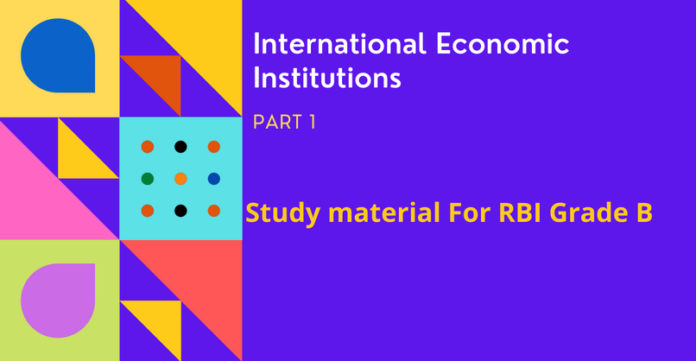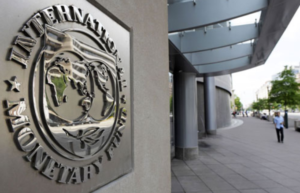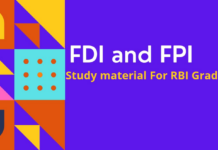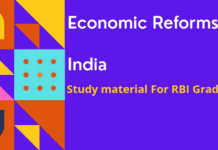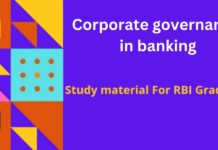INTERNATIONAL FINANCIAL INSTITUTIONS
An international financial institution (IFI) is a financial institution that has been established (or chartered) by more than one country, and hence is subject to international law. International financial institutions such as the World Bank and the Asian Development Bank provide significant financial and technical support for developing countries in their efforts to eradicate poverty and achieve the Sustainable Development Goals (SDGs). International Financial Institutions (IFIs), including multilateral, regional and national development banks with international operations, are critical development partners to achieve the Sustainable Development Goals (SDGs).
IMF
The International Monetary Fund (IMF) is an organization of 189 countries, working to:
- foster global monetary cooperation
- secure financial stability
- facilitate international trade
- promote high employment and sustainable economic growth
- reduce poverty around the world.
Created in 1945, the IMF is governed by and accountable to the 189 countries that make up its near-global membership. The IMF’s primary purpose is to ensure the stability of the international monetary system—the system of exchange rates and international payments that enables countries (and their citizens) to transact with each other.
- Managing Director: Kristalina Georgieva
- Headquarters: Washington, D.C. U.S
- Chief Economist: Gita Gopinath
- IMFs financial year is from May 1 to April 30
History: In 1944, representatives of 44 nations met in Bretton Woods, New Hampshire, to draw up a plan for the post-World War II economic order. Their goal was to avoid a repetition of the destructive policies that could spark another conflict. So they created the IMF to promote international monetary cooperation.
What IMF does?
The IMF’s fundamental mission is to ensure the stability of the international monetary system. It does so in three ways: keeping track of the global economy and the economies of member countries (economic surveillance); lending to countries with balance of payments difficulties; and giving practical help to members (capacity development)
Quotas:
Quota subscriptions are a central component of the IMF’s financial resources. Each member country of the IMF is assigned a quota, based broadly on its relative position in the world economy. A member’s quota subscription determines the maximum amount of financial resources the member is obliged to provide to the IMF. A member must pay its subscription in full upon joining the IMF: up to 25 percent must be paid in SDRs or foreign currencies acceptable to the IMF (such as the US dollar, the euro, the Chinese renminbi, the Japanese yen, or the British pound sterling), while the rest is paid in the member’s own currency. The amount of financing a member can obtain from the IMF (its access limit) is based on its quota.
Special Drawing Rights (SDR):
The SDR is an international reserve asset, created by the IMF in 1969 to supplement its member countries’ official reserves. Presently, value of one SDR is determined by a basket of 5 currencies namely:
- US dollar- highest weightage
- Euro
- Yen
- British pound
- Chinese Renminbi
Country Representation:
IMF is controlled and managed by a board of governors. Each member country nominates a Governor and all nominated governors make the board of governors. Each governor is allotted a number of votes, which is determined by the quota allotted to the respective country in IMF. Decision making at the IMF is designed to reflect the relative positions of its member countries in the global economy. India’s voting rights increased by 0.3% from the current 2.3% to 2.6%
Reports published by the IMF
- World Economic Outlook
- Regional Economic Report
- Global Financial Stability Report
WORLD ECONOMIC OUTLOOK CHAPTER 1, APRIL 2020
The Great Lockdown
The global economy is projected to contract sharply by 4.9% in 2020 as a result of the COVID-19 pandemic, a much worse contraction than during the 2008–09 financial crisis.
WORLD ECONOMIC OUTLOOK Update June 2020
THE WORLD BANK
The World Bank is a vital source of financial and technical assistance to developing countries around the world. It provides low-interest loans, zero to low-interest credits, and grants to developing countries. Established in 1944, the World Bank Group is headquartered in Washington, D.C.
- Members-189
- President – David Malpass
- Anshula Kant is the chief financial officer and managing director of the World Bank Group
History: The Bretton Woods Conference, formally known as the United Nations Monetary and Financial Conference, was the gathering of 730 delegates from all 44 Allied nations to regulate the international monetary and financial order after the conclusion of World War II. Agreements were signed that, after legislative ratification by member governments, established the International Bank for Reconstruction and Development (IBRD) and the International Monetary Fund (IMF).
The World Bank Group has set two goals for the world to achieve by 2030:
- End extreme poverty by decreasing the percentage of people living on less than $1.90 a day to no more than 3%
- Promote shared prosperity by fostering the income growth of the bottom 40% for every country
The World Bank Group consists of five organizations:
The International Bank for Reconstruction and Development: The International Bank for Reconstruction and Development (IBRD) lends to governments of middle-income and creditworthy low-income countries.
The International Development Association: The International Development Association (IDA) provides interest-free loans — called credits — and grants to governments of the poorest countries. Together, IBRD and IDA make up the World Bank.
The International Finance Corporation: The International Finance Corporation (IFC) is the largest global development institution focused exclusively on the private sector. It helps developing countries achieve sustainable growth by financing investment, mobilizing capital in international financial markets, and providing advisory services to businesses and governments.
The Multilateral Investment Guarantee Agency: The Multilateral Investment Guarantee Agency (MIGA) was created in 1988 to promote foreign direct investment into developing countries to support economic growth, reduce poverty, and improve people’s lives. MIGA fulfills this mandate by offering political risk insurance (guarantees) to investors and lenders.
The International Centre for Settlement of Investment Disputes: The International Centre for Settlement of Investment Disputes (ICSID) provides international facilities for conciliation and arbitration of investment disputes.
India is a member of 4 institutions under world bank group. It is not a member of ICSID.
To become a member, however, a country must first join the International Monetary Fund (IMF). The size of the World Bank’s shareholders, like that of the IMF’s shareholders, depends on the size of a country’s economy
Reports published by World Bank
- Global Economic Prospects
- Ease of Doing Business
- World Development Report
- Global Economic Prospects Report
- India Development Update
- Universal Health Coverage Index
The United Nations (UN)
The United Nations is an international organization founded in 1945. It is currently made up of 193 Member States. The mission and work
of the United Nations are guided by the purposes and principles contained in its founding Charter. Each of the 193 Member States of the United Nations is a member of the General Assembly. States are admitted to membership in the UN by a decision of the General Assembly upon the recommendation of the Security Council.
The main organs of the UN are the General Assembly, the Security Council, the Economic and Social Council, the Trusteeship Council, the International Court of Justice, and the UN Secretariat.
The World Trade Organization (WTO)
The World Trade Organization (WTO) is the only global international organization dealing with the rules of trade between nations
- Location: Geneva, Switzerland
- Established: 1 January 1995
- Created by: Uruguay Round negotiations (1986-94)
- Membership: 164 members representing 98 per cent of world trade
- Head: Roberto Azevêdo (Director-General)
- The WTO’s top decision-making body is the Ministerial Conference.
Ministerial conferences usually take place every two years. - The General Council is the top day-to-day decision-making body.
Functions:
- Administering WTO trade agreements
- Forum for trade negotiations
- Handling trade disputes
- Monitoring national trade policies
- Technical assistance and training for developing countries
- Cooperation with other international organizations
The WTO is the successor to the General Agreement on Tariffs and Trade (GATT) established in the wake of the Second World War. GATT was the first worldwide multilateral free trade agreement. It was in effect from June 30, 1948 until January 1, 1995. It ended when it was replaced by the World Trade Organization.
WTO Agreements: The agreements fall into a simple structure with six main parts
- An umbrella agreement (the Agreement Establishing the WTO)
- Agreements for each of the three broad areas of trade that the WTO covers (goods, services and intellectual property)
- Dispute settlement
- Reviews of governments’ trade policies.
Principle of Trade
- Trade without discrimination- Most Favored Nation (MFN): Treating other nations equally. Under the WTO principle of trading system, countries normally are not allowed to discriminate between their trading partners.
- National Treatment: Treating foreigners and locals equally. Under this principle, foreign goods are given same treatment as one’s own.
- Free Trade: Lowering trade barriers is one of the most obvious means of encouraging trade.
- Predictability: With stability, predictability and binding commitments, WTO principle seeks to encourage investment, create jobs and to accrue the benefits of competition to consumers in the form of choice quality and lower prices.
- Promoting Fair Competition: WTO agreements also aim to support fair competition in trade in agriculture, intellectual property, services etc.
- Encouraging Development and Economic Reforms: Developing countries that need flexibility to implement the system’s agreements are given special assistance and trade concessions under WTO rules. This promotes economic reforms and development in these countries.
What is Doha Development Agenda? The Doha Round of world trade negotiations – also known as the Doha Development Agenda – was launched in Doha, Qatar in November 2001. The talks aimed at further liberalizing trade, whilst making it easier for developing countries, particularly Least Developed Countries (LDCs), to integrate into the WTO multilateral system.
The Agreement on Agriculture (AoA) is an international treaty of the World Trade Organization. It was negotiated during the Uruguay Round of the General Agreement on Tariffs and Trade, and entered into force with the establishment of the WTO on January 1, 1995. The Agreement on Agriculture constitutes of three pillars—domestic support, market access, and export subsidies.
AoA divides domestic support into two categories: trade-distorting and non-trade-distorting (or minimally trade-distorting). The WTO Agreement on Agriculture negotiated in the Uruguay Round (1986–1994) includes the classification of subsidies by “boxes” depending on consequences of production and trade
- Green Box: Subsidies which are not or least market distorting includes measures decoupled from output such as safety net programs, payments under environmental programs etc.
- Blue Box: Only ‘Production limiting Subsidies’ under this are allowed. They cover payments based on acreage, yield, or number of livestock in a base year.
- Amber Box: Those subsidies which are trade distorting and need to be curbed.
Asian Development Bank (ADB)
ADB is committed to achieving a prosperous, inclusive, resilient, and sustainable Asia and the Pacific, while sustaining its efforts to eradicate extreme poverty. Established in 1966, it is owned by 68 members—49 from the region.
- Headquarters: The Philippines capital of
- Takeshi Watanabe was ADB’s first President.
ADB assists its members, and partners, by providing loans, technical assistance, grants, and equity investments to promote social and economic development. The ADB offers “hard” loans on commercial terms primarily to middle income countries in Asia and “soft” loans with lower interest rates to poorer countries.
African Development Bank
The overarching objective of the African Development Bank (AfDB) Group is to spur sustainable economic development and social progress in its regional member countries (RMCs), thus contributing to poverty reduction.
The Bank Group achieves this objective by:
- mobilizing and allocating resources for investment in RMCs; and
- providing policy advice and technical assistance to support development efforts.
- Founded 1964
- Constituent Institutions
- Shareholders- 81 countries– India a non regional member
- President: Akinwumi Adesina
- CEO: Akinwumi Adesina
Headquarters: Abidjan, Côte d’Ivoire

